I don't think we've ever gone to Provence without going to
Roussillon, a village in the Luberon about 35 miles southeast of Sablet, and we certainly were going to make sure neighbors Bob, Darlene, Ed and Gwen got there. We love the colorful houses in Roussillon, tinted by ocher that used to be mined here; this makes Roussillon unique compared to other villages in the area.
The Luberon stretches 35 miles along a ridge of rugged hills from Cavaillon in the west to Manosque in the east and from the town of Apt south to the Durance River. Much of the area including Roussillon is protected in the Parc Naturel Régional du Luberon.
Roussillon is classified as one of the Plus Beaux Villages de France (one of the most beautiful villages of France). Roussillon sits above one of the world's largest ocher deposits where 17 shades of ocher--violet, blood red, orange, yellow, and everything in between were once mined.
 |
| Roussillon |
Just a few minutes walk from the village is the trailhead for the Sentier des Ocres (Ocher trail). Ocher is a natural pigment in the soil which form the cliffs around Roussillon. Iron oxides color the sands into shades ranging from yellow to violet. The mineral landscape shows the effects of erosion and mining work done by man.
Two different trails, one short, one long, take you through the ocher lands on a 30-minute or 60-minute walk. You can stay as long as you like. Information signs along the way describe the geology, flora and history of the ocher deposits in the Luberon. The trails takes you past multi-colored ocher formations set against a backdrop of pine trees.
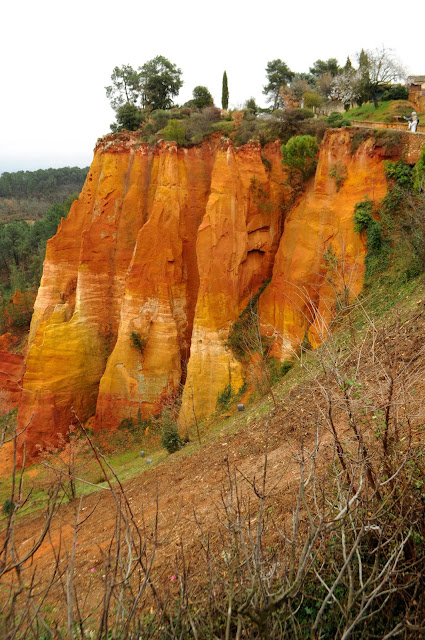 |
| Ocher cliff |
It's still not known exactly why geological changes caused these pigments precisely here and not elsewhere in the region.
 |
| Green forest on ocher hills |
 |
| More of Roussillon |
A rainbow like row of brightly colored houses in Roussillon.
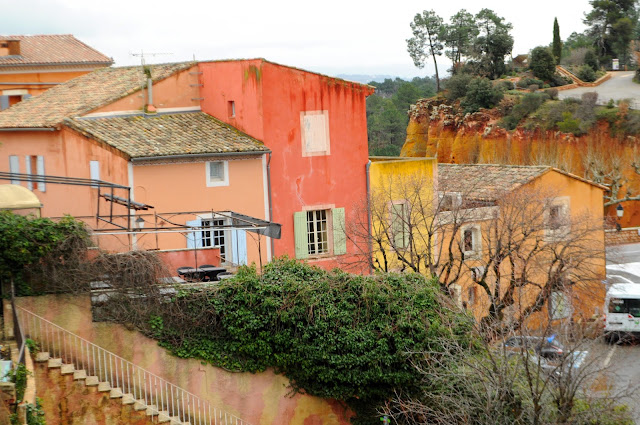 |
| Brightly colored buildings |
Roussillon has been inhabited since Neolithic time, then later by the Romans who also left their traces. The village is also well known for being home to Samuel Beckett during Second World War.
 |
| La Maison Tacchella to the left and the Hotel de Ville to the right |
Most likely thanks to its connection to pigments, plus its location and the natural light of the Luberon, Roussillon has been a destination for artists for many years. There are quite a few art galleries in the village and you can follow an art itinerary where you can visit participating galleries and artists workshops, specializing in paintings, sculpture, and ceramics.
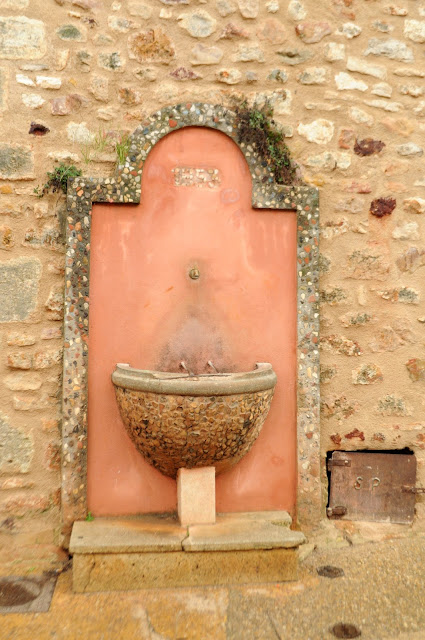 |
| Roussillon fountain |
Roussillon must have more restaurants per head of population than any other Luberon village. Most are clustered around the square near the top of the village.
 |
| Town Hall Square |
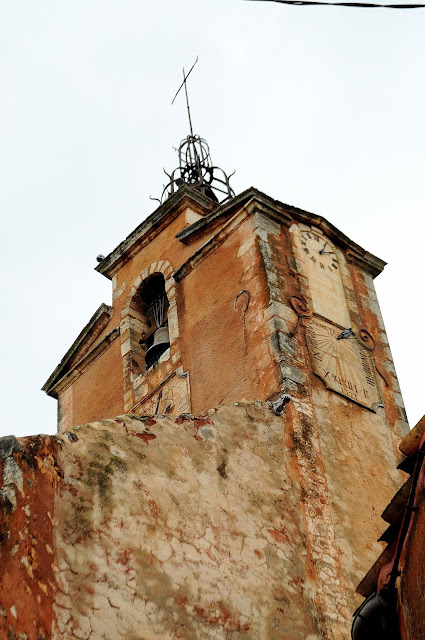 |
| Roussillon belfry |
As you stroll around the village, make sure you look for the 150 year old grape vine in front of Restaurant la Treille.
 |
| 150 year old grape vine |
The clock and 19th century belfry with a campanile overlooking the main village square. The archway at the bottom of the belfry was the ancient entrance into the fortified area called the Castrum
 |
| Roussillon street |
The Librairie (bookstore) in La Maison Tacchella to the left and the Hotel de Ville (town hall) to the right in Town Hall Square, the main hub of activity along with the place du Pasquier on Thursday mornings when there's a weekly market and traffic gets even more congested than usual.
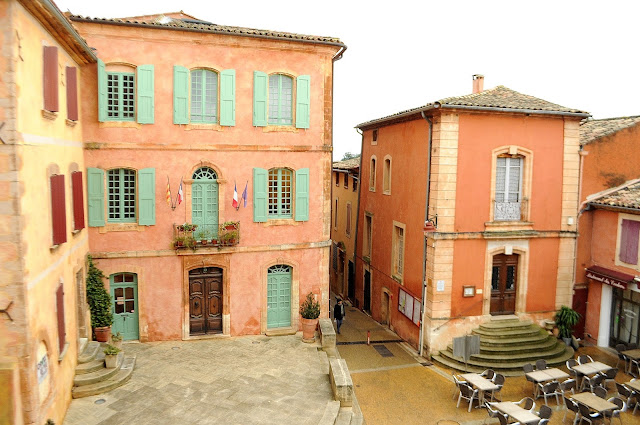 |
| View over Town Hall Square |
Follow the street up to the Castrum at the top of the village and you will find some wonderful panoramic views across the valley to the Grand Luberon, the slopes of Mont Ventoux, and the plateau of the Vaucluse.
 |
| Passageway through the belfry |
 |
| Neighbor Gwen pauses for a picture |
Roussillon has been a protected village since 1943 and has benefited from a complete absence of modern development.
 |
| Archway view out over Luberon valley |
 |
| Roussillon belfry |
Saint Michel Church whose origins go back to the 11th century, originally faced the castle, inside the fortified walls. The church has undergone countless renovations over time, necessitated in part by its location by the cliff.
 |
| Saint Michel Church |
Ocher only became a widespread, industrial product in the late 18th century when Roussillon native son Jean-Etienne Astier came up with the idea of washing the ocher-laden sands to extract the pure pigment.
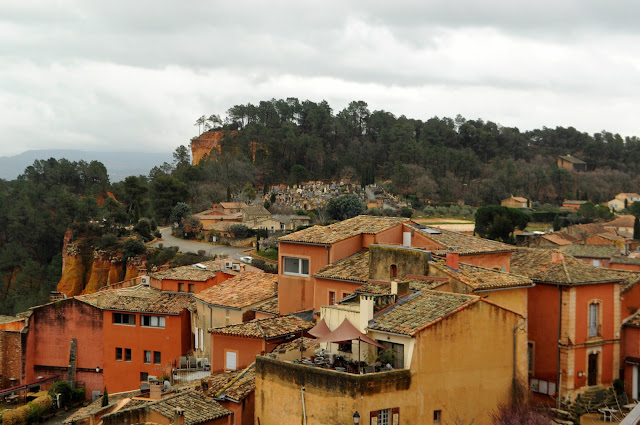 |
| View over Roussillon with village cemetery in distance |
There are colorful old buildings and narrow medieval streets everywhere you go in Roussillon.
 |
| Small stone house |
 |
| Narrow passageway in Roussillon |
 |
| Pretty entryway into private courtyard |
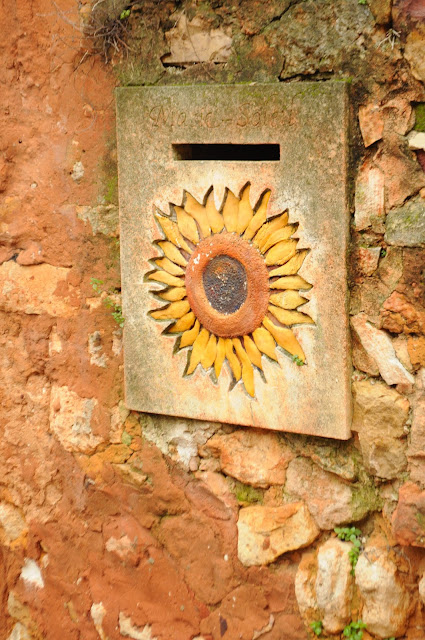 |
| Roussillon post box |
 |
| Stone house in Roussillon painted over with ocher |
 |
| Shirley pauses for picture |
 |
| Unusual Roussillon house |
 |
| Colorful houses in Roussillon |
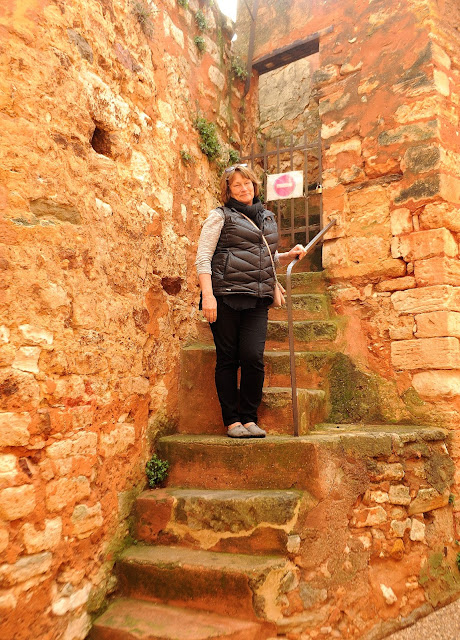 |
| Shirley on steps |
 |
| Roussillon statue near the defensive wall |
The ocher facades of the houses in Roussillon are beautiful - the colors vary from light yellow to dark red, accented by brightly painted shutters and doors. Many date from the 17th and 18th century.
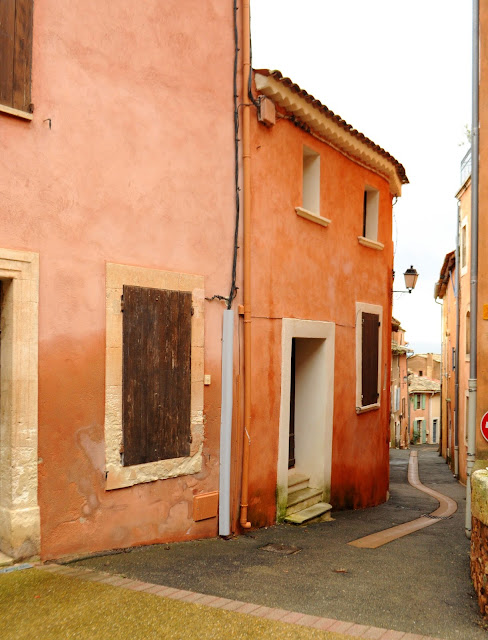 |
| Colorful Roussillon street |
As you can imagine, the beauty of Roussillon draws hordes of artists and visitors during tourist season. It is the most visited village in the Luberon after Gordes, a few miles to the west. Despite this, we have never had any problem finding parking close to the village.
 |
| Colorful Roussillon houses |
We think it's best to visit in the morning when the first sunshine of the day strikes the village, to see the glowing colors at their most stunning. Roussillon is fairly small so it doesn't take very long to explore. So combine a visit to Roussillon with a visit to Gordes or other hill towns such as Lacoste, Menerbes or Lourmarin in the Luberon.
If you are considering a sojourn in the South of France this summer, we would be honored if you would consider our home. You can find everything you need to know at www.sablethouse.com. We still have May 27-June 24 and September 1-9 and September 23-30. We will give a 40% discount on a weekly rental or more during the May 27-June 24 period.
No comments:
Post a Comment